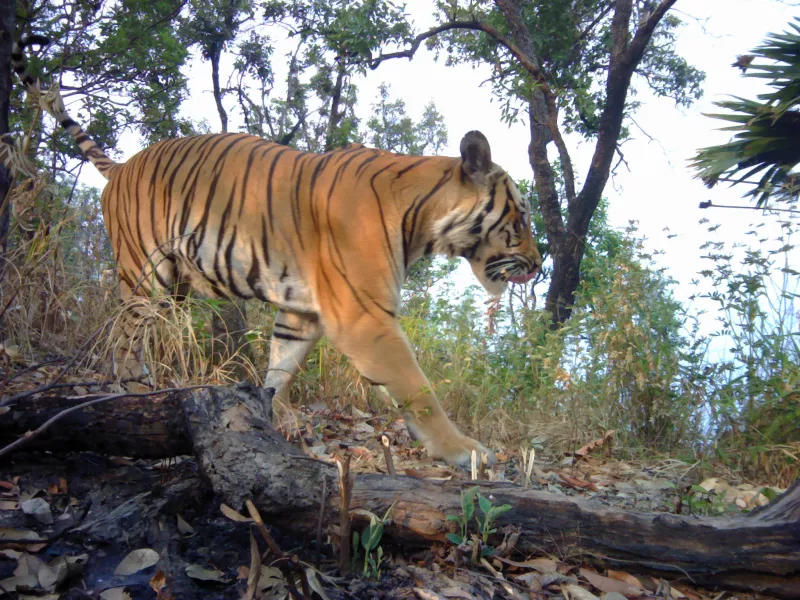The number of wild tigers is on the increase in Bhutan, China, India, Nepal and Russia, a decade on from the launch of an ambitious scheme to double the population of the species.
The TX2 initiative was launched in 2010 when it was estimated that wild populations of the cat were at a historic low with as few as 3,200 animals remaining across the 13 “range” countries where they are found.
It aims to double the number of tigers in the wild by 2022, the next Chinese Year of the Tiger.
Conservationists are marking this year’s Global Tiger Day by highlighting some of the successes that have been seen in range countries following efforts to protect tigers and their habitat.
In India, the number of wild tigers has more than doubled from 2006 to 2018 and is estimated at between 2,600 and 3,350 animals – around three-quarters of the world’s population.
Nepal’s population of tigers had nearly doubled by 2018, up from 121 individuals in 2009 to 235 just under a decade later.
The population in Nepal’s Bardia National Park alone has increased from just 18 tigers in 2008 to 87 in 2018, wildlife charity WWF said.
In Russia, Amur tiger numbers have increased by 15% in the past 10 years to around 540 animals, and in Bhutan’s Royal Manas National Park the population rose from only 10 tigers a decade ago to 22 in 2019.
In 2010 China had no more than 20 wild tigers, most of which had crossed the border from Russia.
But the country recorded a landmark moment in 2014 when camera traps captured footage of a tigress and her cubs in Jilin Wangqing Nature Reserve, indicating that tigers were breeding in China again and dispersing into new areas.

Becci May, regional manager, Asian Big Cats, at WWF UK, said: “Ten years ago, tigers were in such a perilous state that there was a very real risk of them becoming extinct in the wild.
“From that population low in 2010, they are finally making a remarkable comeback in much of South Asia, Russia and China, thanks to co-ordinated and concerted conservation efforts in these countries.
“This is an achievement that not only offers a future for tigers in the wild, but for the landscapes they inhabit and the communities living alongside this iconic big cat.”
There are still only around 3,900 tigers in the wild, where they are under threat from poaching for the illegal wildlife trade, and the destruction and breaking up of their habitat across much of their range, WWF said.
The key to helping wild tiger populations recover is to focus on conserving landscapes where they can thrive and ensuring communities in these wildlife-rich areas are supported and included in conservation, the organisation said.

Also to mark Global Tiger Day, Thailand’s Department of National Parks, Wildlife and Plant Conservation (DNP), Panthera and the Zoological Society of London (ZSL) have released footage and photos showing numerous new tigers in a region of western Thailand.
The images come from camera traps set as part of a monitoring programme adjacent to the largest remaining and only second known breeding population of Indochinese tigers in the world.
The sign of tigers in new areas suggests suitable habitat and prey exists for them there, the experts said.
Chief of the Wildlife Research Division for DNP Dr Saksit Simcharoen said: “These sightings are extremely encouraging for the future of tigers in our country and beyond.
“These tigers are in a precarious situation. Sustained and stronger protection of this area from poaching activity of any kind is the key to ensuring these individuals live on, helping Thailand’s tigers to rebound.”







